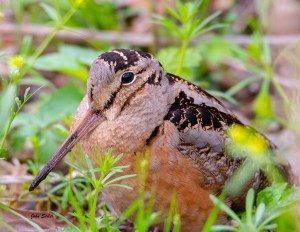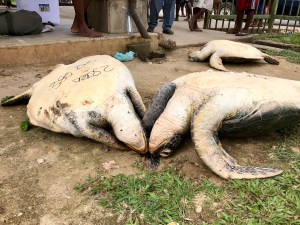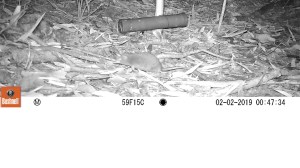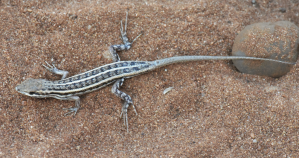Discover stories in Wildlife Science
Tracking Down the American Woodcock
A Q&A with scientist Colby Slezak on how following the migrating shorebirds revealed a rare nesting pattern.
Are There Mountain Lions in New Jersey?
Sightings of mountain lions abound in the eastern United States. What’s the real story?
Do Enticing Mites Help Florida Scrub Lizards Attract a Mate?
Scientists at TNC's Tiger Creek Preserve are using lizard robots — yes, robots — to figure out if parasitic mites helped lizards attract a mate.
To Save Pacific Turtles, Focus on Small-Scale Fisheries
Small-scale fisheries cause significantly greater mortality to Solomon Islands turtles than longliners.
Caught on Camera: the Long-Nosed Chilean Shrew Opossum
Camera traps in the Valdivian Coastal Reserve document an increase in sites where one of Chile's least-known marsupials is known to live.
Meet the Mysterious Long-Nosed Chilean Shrew Opossum
Spoiler alert: it's not a shrew. It's a relict marsupial, and has lived in the forests of Chile's Valdivian Coast for millennia.
Bringing Beavers Back to Britain
Nature Conservancy & National Geographic Society extern Eleanor Salisbury shares her experience studying how reintroducing beavers to the U.K. can benefit both nature and people.
TNC Scientist Honored with Naming of New Skink Species
It’s not every day that a young female scientist is honored alongside David Attenborough and E. O. Wilson.
Small but Mighty: Pacific Island Atolls are Globally Important Sites for Tropical Seabirds
Global conservation efforts largely overlook the important contributions of atolls to the protection, restoration, and survival of tropical seabirds.
This Skunk Does Handstands. Yes, Handstands.
The island spotted skunk is difficult to observe. But a monitoring program on California’s Channel Islands offers a glimpse at this creature’s amazing habits.
Saltmarsh Sparrow: The “Canary” of Sea-Level Rise
The saltmarsh sparrow is literally adapted to keep its head above water. But the seas are rising.
Shearwater Search: The Trials and Rewards of Offshore Seabird Research
Off the coast of Long Island, researchers are helping shape conservation actions by tracking seabirds. But they have to catch them first.











